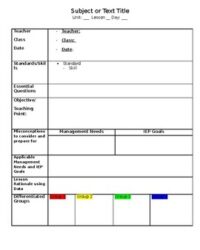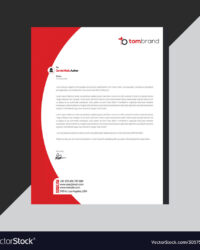In today’s wonderfully diverse classrooms, educators face a unique opportunity and a significant challenge: how do we truly connect with every student, acknowledging and valuing the rich tapestry of their backgrounds, experiences, and ways of knowing? Traditional teaching methods, while often well-intentioned, can sometimes inadvertently overlook the profound cultural contexts that shape a student’s identity and their approach to learning. This can lead to disengagement, a sense of alienation, and ultimately, missed educational opportunities for many.
The answer lies in embracing culturally responsive teaching, an approach that centers student culture and experience in the learning process. It is about building bridges between what students already know and what they need to learn, making education relevant, engaging, and deeply personal. To help educators effectively integrate this powerful philosophy into their daily practice, a well-designed culturally responsive lesson plan template becomes an indispensable tool, guiding the creation of equitable and impactful learning experiences for all.
Understanding the Core of Culturally Responsive Teaching
Culturally responsive teaching isn’t just about celebrating holidays or acknowledging different traditions; it’s a fundamental shift in pedagogy. At its heart, it involves recognizing and valuing the cultural knowledge, prior experiences, and performance styles of diverse students, then using these as a lens through which to make learning more relevant and effective. It acknowledges that every student brings a unique cultural toolkit to the classroom, which can be leveraged as a resource for learning, rather than an obstacle to overcome. It’s about seeing cultural differences as strengths, not deficits.
This approach is particularly vital when it comes to lesson planning because it ensures that the curriculum and instructional strategies are not culturally biased or exclusive. Instead of presenting information in a generic, one-size-fits-all manner, culturally responsive planning encourages educators to think deeply about how content can resonate with students from various backgrounds. It challenges us to move beyond superficial inclusion to a genuine integration of diverse perspectives, making the learning experience more authentic and meaningful for everyone involved.
The benefits of implementing culturally responsive practices are far-reaching. When students see themselves reflected in the curriculum and feel their cultural identities are affirmed, their engagement levels soar. This leads to improved academic outcomes, a stronger sense of belonging, and a greater motivation to learn. It also helps in fostering critical thinking skills as students explore multiple viewpoints and develop a deeper understanding of the world around them, preparing them for a diverse global society.
However, moving from theory to practice can feel daunting. That’s where a structured culturally responsive lesson plan template comes into play. It provides a roadmap, ensuring that educators consider all the necessary components for truly responsive teaching, from understanding student backgrounds to designing culturally relevant assessments, helping to systematically embed these vital principles into every lesson.
Key Elements to Include in Your Template
When designing or utilizing a culturally responsive lesson plan template, several key components should be prominent to ensure comprehensive integration of this approach. These elements guide educators in thoughtful preparation, fostering an environment where all students can thrive.
- Student Background and Prior Knowledge: A section dedicated to noting students’ cultural backgrounds, interests, and existing knowledge related to the lesson topic, allowing for personalized connections.
- Cultural Relevance and Connection: Space to articulate how the lesson content connects to students’ lives, communities, and cultural contexts, making learning relatable and meaningful.
- Diverse Materials and Resources: Prompts to include literature, visuals, and other resources that represent a wide range of cultures, experiences, and perspectives.
- Flexible Instructional Strategies: Encouragement to incorporate varied teaching methods that cater to diverse learning styles and cultural communication patterns, such as cooperative learning, storytelling, or kinesthetic activities.
- Authentic Assessment: Guidance for designing assessments that allow students to demonstrate understanding in multiple ways, respecting different modes of expression and knowledge application.
Adapting for Diverse Learners
Beyond simply including diverse content, a culturally responsive lesson plan template encourages educators to adapt their instructional methods to meet the diverse learning needs and styles of their students. This means thinking about how communication patterns, social norms, and preferred ways of interacting with knowledge might differ across cultures, and then tailoring teaching to bridge those gaps. It’s about creating multiple pathways to understanding and allowing for varied expressions of knowledge, recognizing that there isn’t one single “right” way to learn or demonstrate mastery.
Practical Steps to Implement Your Culturally Responsive Lesson Plan Template
Embarking on the journey of culturally responsive teaching begins with thoughtful preparation, and your culturally responsive lesson plan template is the perfect companion. Before you even step into the classroom, take the time to research your students’ backgrounds, their communities, and the cultural assets they bring. Engage with families where possible, and actively seek out content and examples that resonate with their experiences. Consider how the curriculum can be adapted or enriched to reflect a broader range of perspectives, ensuring that every student sees themselves represented and valued in the learning material.
During the actual lesson delivery, the template helps you stay true to your responsive goals. This means employing a variety of pedagogical approaches that cater to different learning styles and cultural communication norms. Foster a classroom environment where dialogue is encouraged, and students feel safe to share their unique perspectives and experiences. Actively listen to student voices, allowing them to shape discussions and even the direction of the lesson. Remember that learning is a dynamic process, and being responsive means being flexible and open to adjusting your approach based on student engagement and feedback.
After the lesson, the template encourages critical reflection. Did students truly engage with the material? Was the content relevant and accessible to all? What feedback did you receive, implicitly or explicitly, about the cultural responsiveness of the lesson? This ongoing cycle of planning, implementing, and reflecting is crucial. By consistently using your culturally responsive lesson plan template, you refine your practice, ensuring that each lesson not only meets academic objectives but also fosters an inclusive, equitable, and empowering learning environment for every student.
- Research Student Backgrounds: Understand the cultural contexts, prior knowledge, and interests of your students before planning any lesson.
- Connect Content to Real-World Experiences: Identify how the lesson material can be linked to students’ daily lives and cultural realities.
- Incorporate Diverse Voices and Perspectives: Use texts, media, and examples from various cultures and viewpoints to enrich the learning experience.
- Promote Active Participation and Dialogue: Design activities that encourage all students to share their thoughts, experiences, and knowledge.
- Reflect and Adapt: Continuously assess the effectiveness of your culturally responsive strategies and make adjustments for future lessons.
Adopting a culturally responsive approach to teaching is more than just a pedagogical choice; it’s a commitment to creating genuinely equitable and effective learning environments. By intentionally weaving students’ cultural assets into the fabric of daily instruction, educators can unlock deeper levels of engagement and understanding. It’s an ongoing journey of learning and adaptation, continuously striving to make every student feel seen, heard, and valued within the classroom space.
Ultimately, this dedication transforms not just individual lessons, but the entire educational experience. It empowers students by affirming their identities and prepares them to navigate a complex, interconnected world with confidence and competence. For educators, it means building stronger connections with their students and fostering a more vibrant and inclusive learning community where every voice contributes to the collective success.


